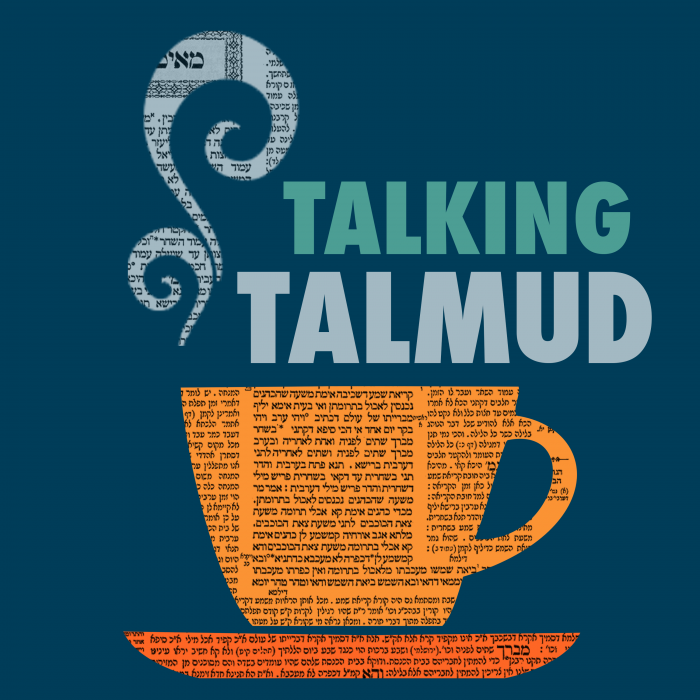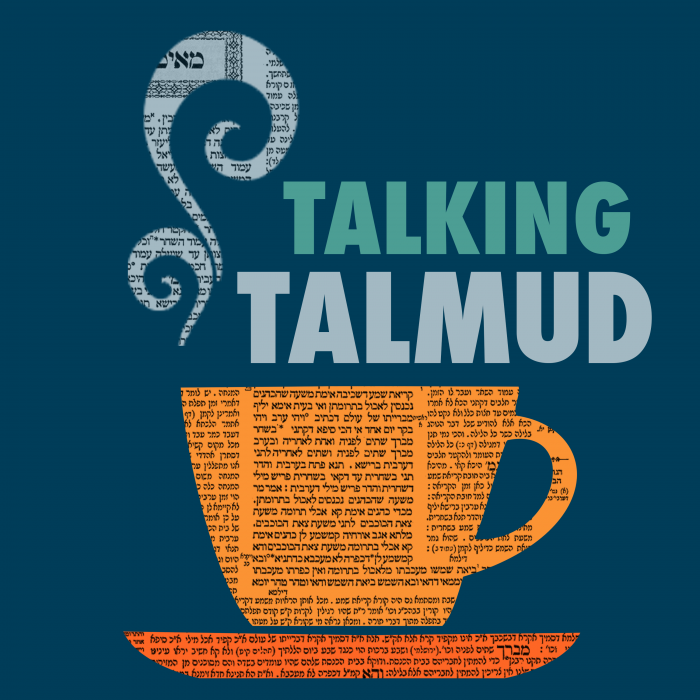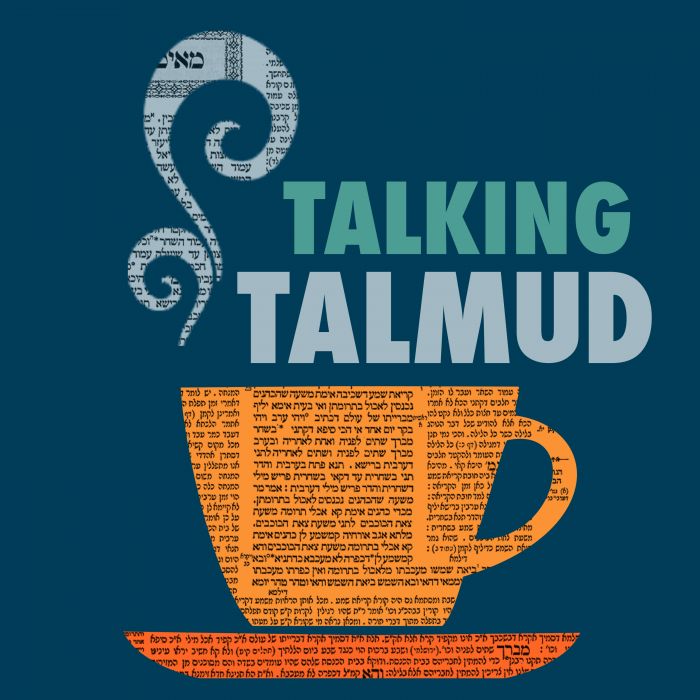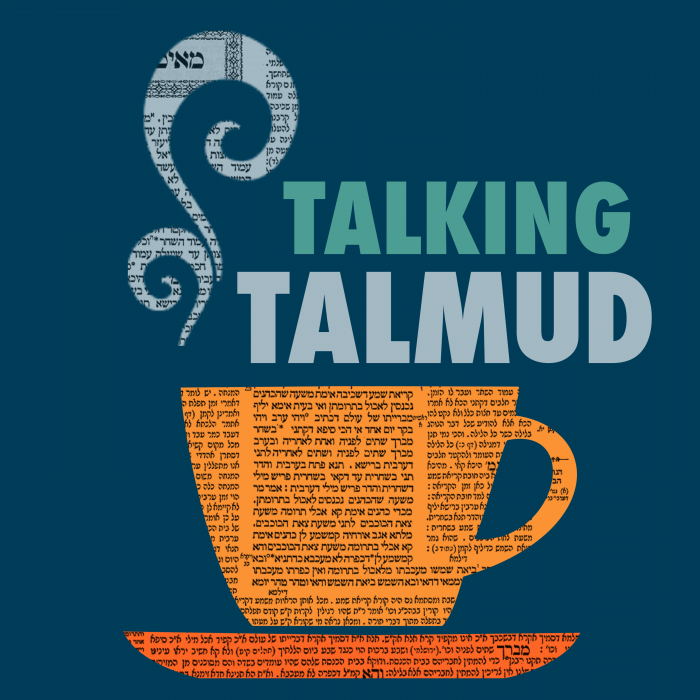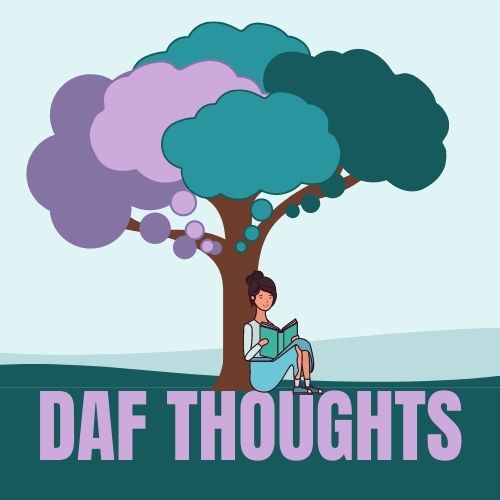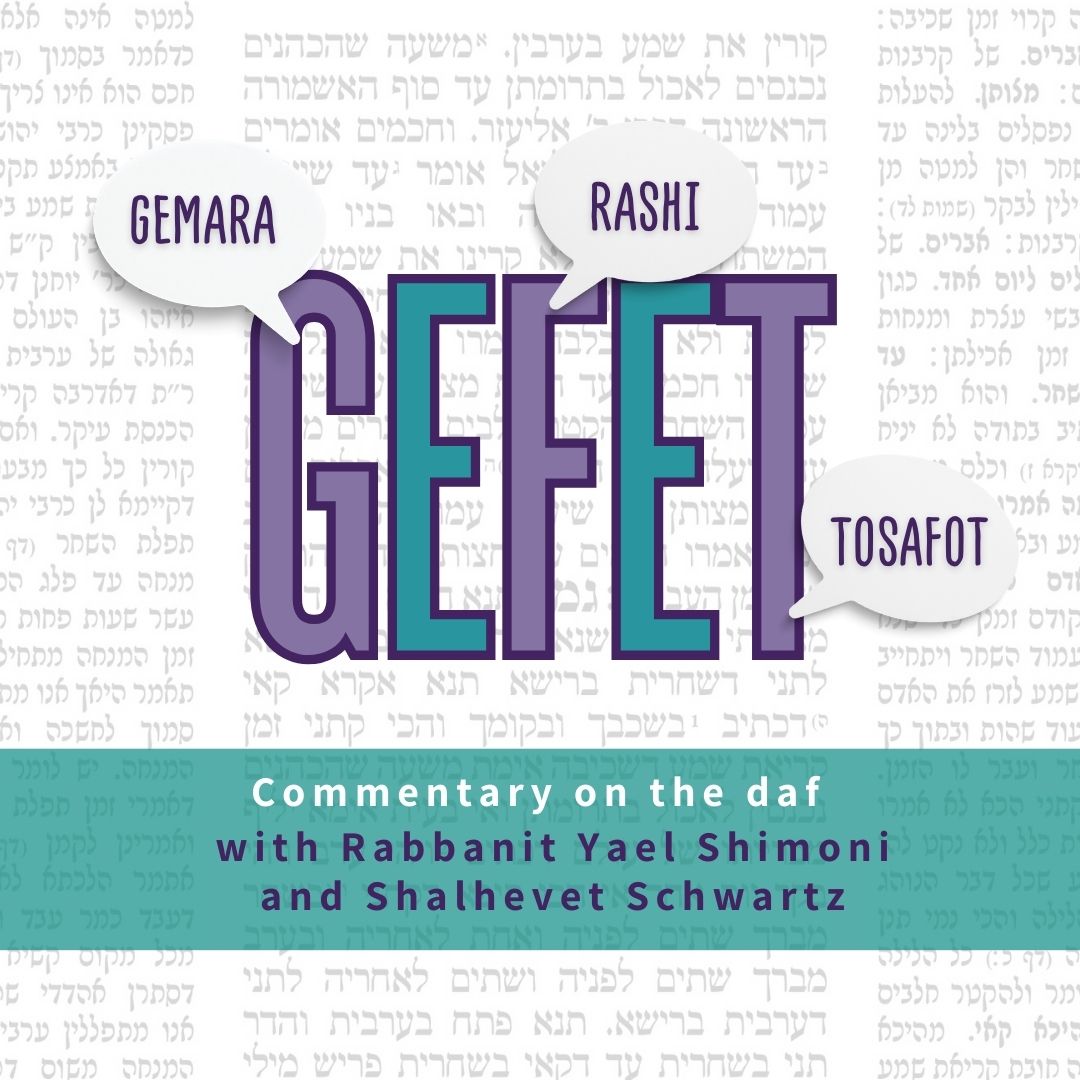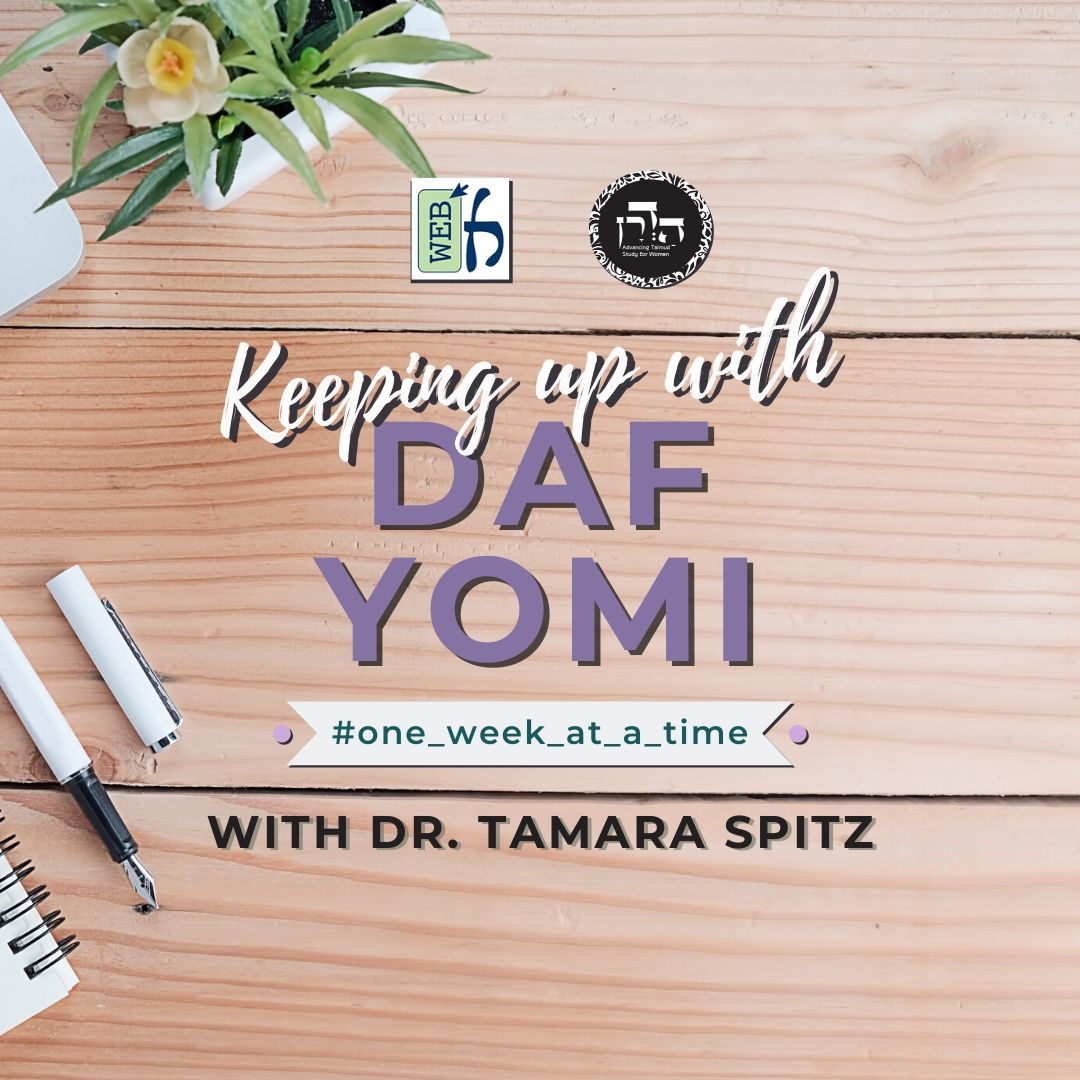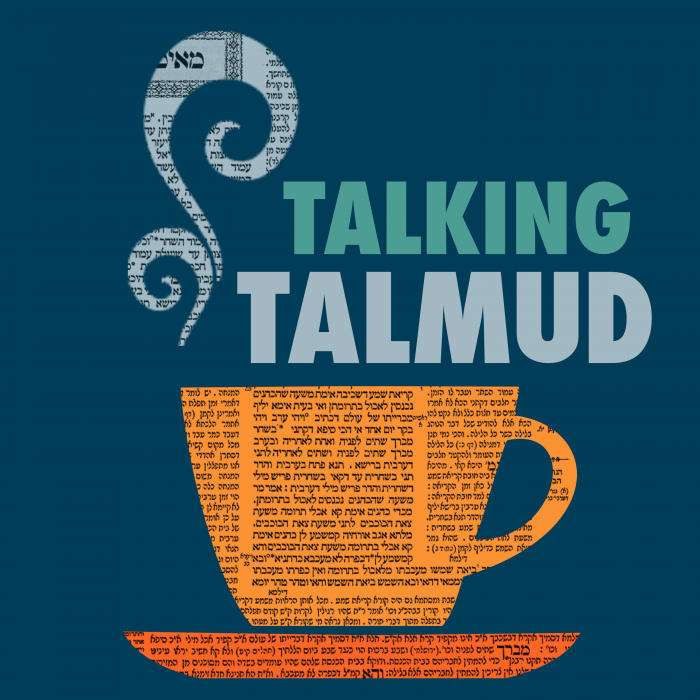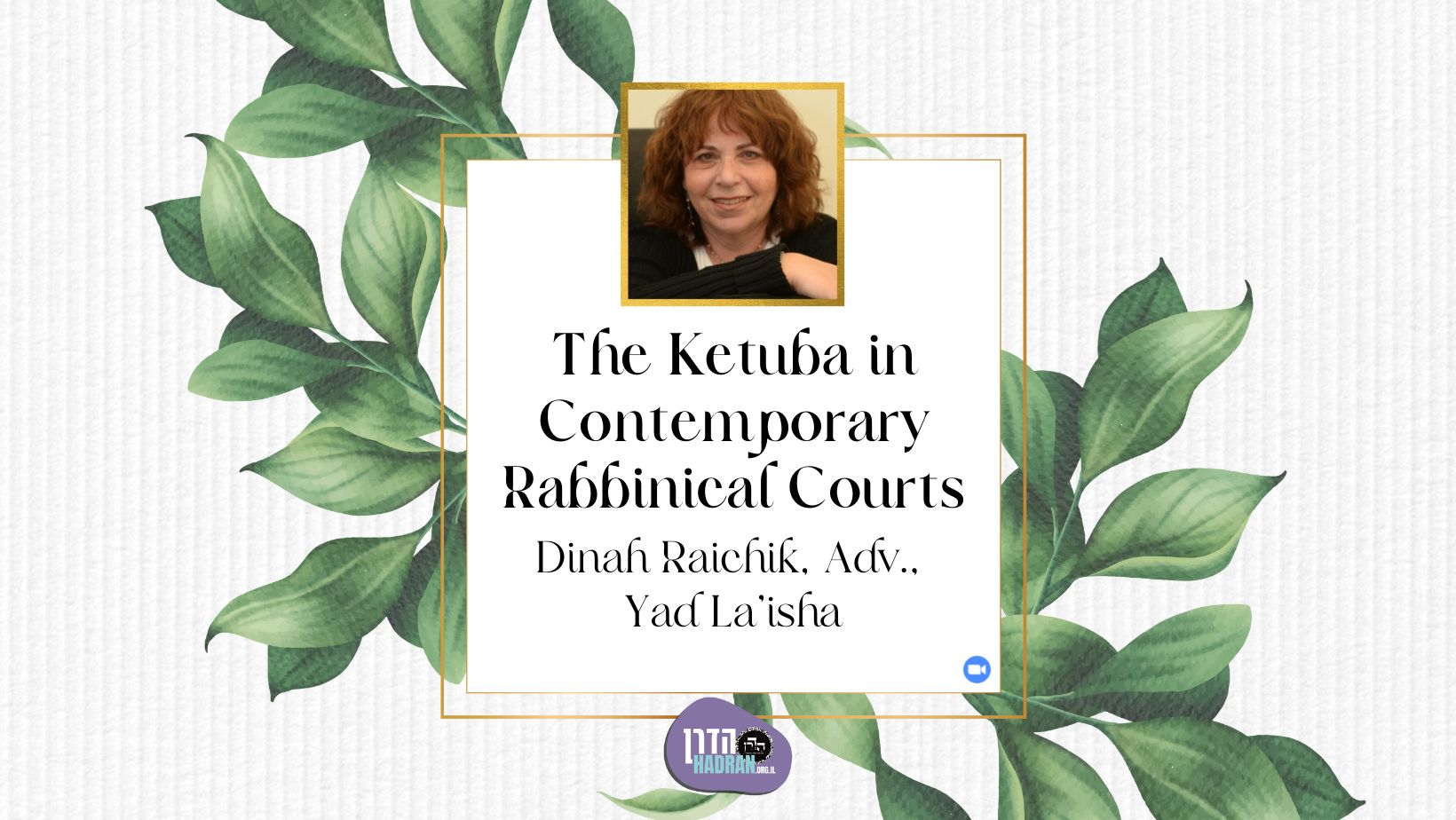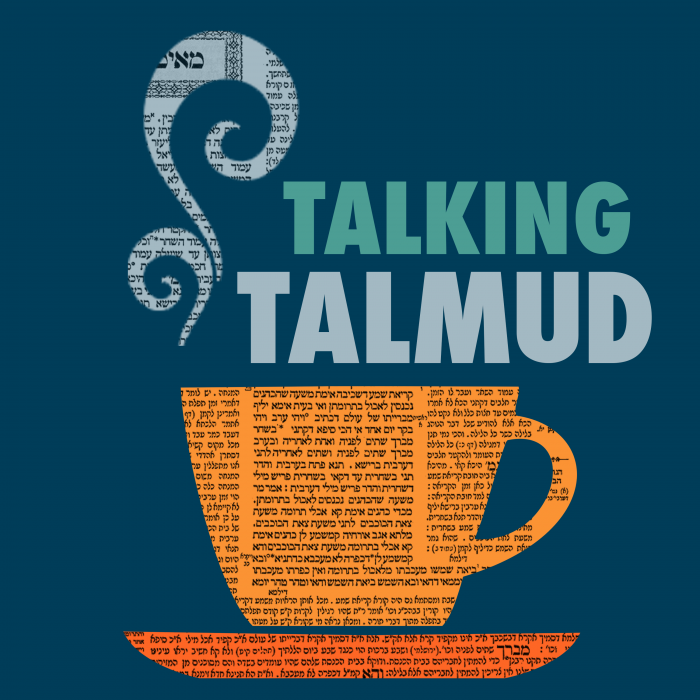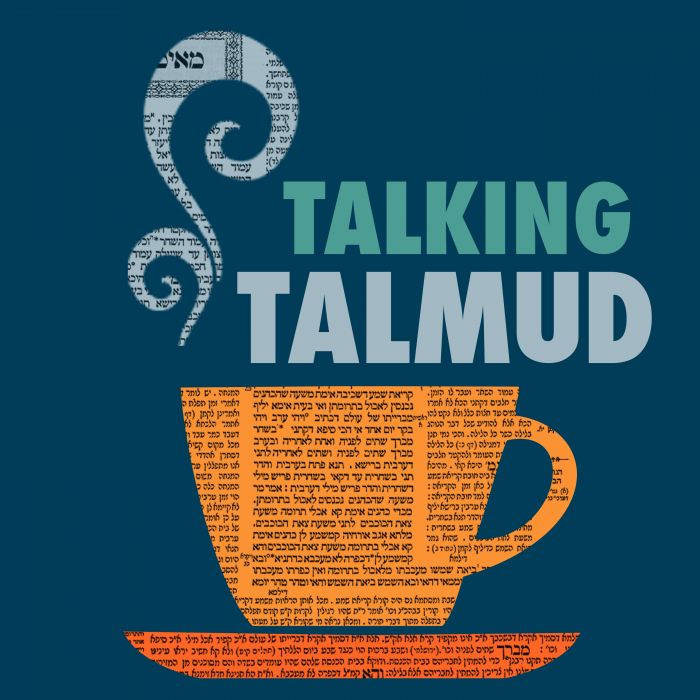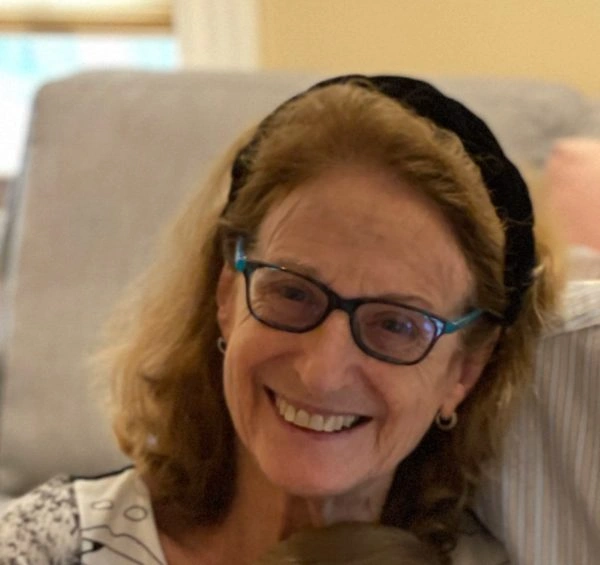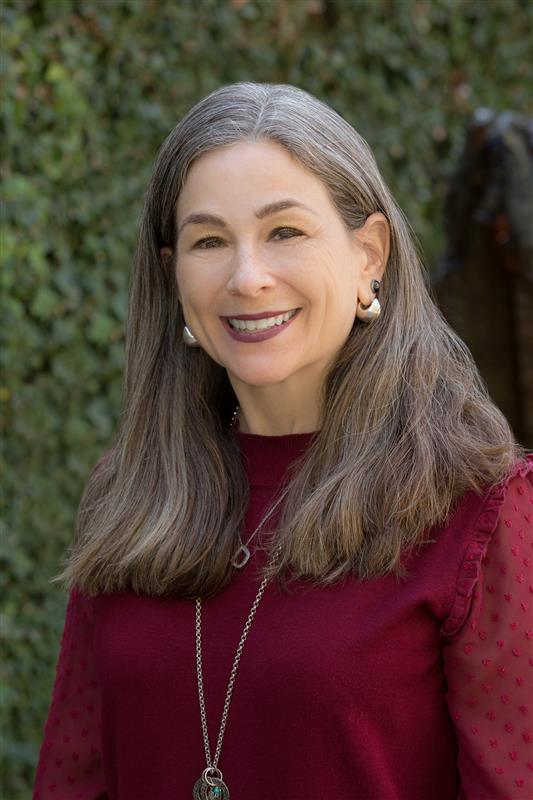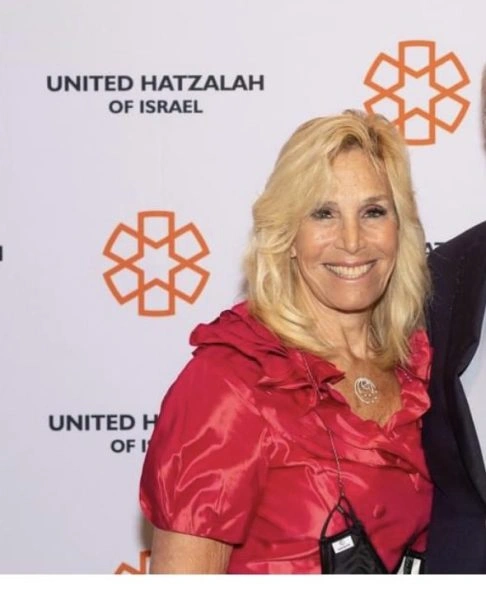Study Guide Menachot 69. A slew of bizarre and random questions are asked – some regarding the omer and some regarding other issues. All are left without answers.
This week’s learning is sponsored by Audrey Mondrow in memory of Irving “Poppy” Mauskopf, Yechezkel ben Rachel and Avraham. “A man that exemplified complete emuna. He greeted everyone with a smile. We were all very privileged to have him in our lives. May his neshama have an aliya.”
This week’s learning is sponsored by Caroline Bollag l’ilui nishmat Pinchas ben Menashe Peyser.
Want to dedicate learning? Get started here:

Today’s daily daf tools:
This week’s learning is sponsored by Audrey Mondrow in memory of Irving “Poppy” Mauskopf, Yechezkel ben Rachel and Avraham. “A man that exemplified complete emuna. He greeted everyone with a smile. We were all very privileged to have him in our lives. May his neshama have an aliya.”
This week’s learning is sponsored by Caroline Bollag l’ilui nishmat Pinchas ben Menashe Peyser.
Today’s daily daf tools:
Delve Deeper
Broaden your understanding of the topics on this daf with classes and podcasts from top women Talmud scholars.
New to Talmud?
Check out our resources designed to help you navigate a page of Talmud – and study at the pace, level and style that fits you.
The Hadran Women’s Tapestry
Meet the diverse women learning Gemara at Hadran and hear their stories.
Menachot 69
בִּכּוּרִים לְפֵירָא קָא אָמְרִינַן? לְמִזְבֵּחַ קָא אָמְרִינַן! וְהָא אָכֵיל לֵהּ מִזְבֵּחַ מִפֵּירֵי דְּהָא שַׁתָּא.
that when we say the two loaves must come from the first fruits, the verse is referring to the new fruit crop grown this year? This is not so. Rather, we say that the two loaves must come from the first fruits sacrificed upon the altar this year. Therefore, even in Rabba’s case the two loaves cannot come from wheat, as the altar had already consumed from the fruit, i.e., the wheat used for the omer offering, of this year.
בָּעֵי רָמֵי בַּר חָמָא: שְׁתֵּי הַלֶּחֶם – הֲנָצָה שָׁרְיָא, אוֹ חֲנָטָה שָׁרְיָיה? מַאי הֲנָצָה, וּמַאי חֲנָטָה? אִילֵּימָא הֲנָצָה דְּפֵירָא וַחֲנָטָה דְּפֵירָא – הַשְׁתָּא הַשְׁרָשָׁה שָׁרְיָא, הֲנָצָה וַחֲנָטָה מִיבַּעְיָא?
§ Rami bar Ḥama raises a dilemma: With regard to the two loaves that permit the bringing of first fruit, are all fruit that are budding at the time of the sacrifice permitted, or are only fruit that has gone through formation permitted? The Gemara asks: What is meant here by budding and what is the meaning of formation? If we say that this is referring to the budding of the fruit and the formation of the fruit, this is difficult: Now that it is taught (70a) that even in the case of the grain taking root prior to the bringing of the two loaves, that grain is permitted by their sacrifice, is it necessary to discuss the budding or formation of fruit, which corresponds to a later stage than the taking root of grain?
אֶלָּא, הֲנָצָה דְּעָלֶה וַחֲנָטָה דְּעָלֶה, מִי הָוֵי כִּי הַשְׁרָשָׁה אוֹ לָא? תֵּיקוּ.
The Gemara answers: Rather, Rami bar Ḥama is referring to the budding of a fruit tree’s leaf and the formation of a fruit tree’s leaf. The question is whether the budding of the fruit tree’s leaves is like the taking root of grain, and therefore all the tree’s first fruit is permitted by the two loaves, or whether this budding is not similar to the taking root of grain, and therefore the tree’s fruit is not permitted by the two loaves. The Gemara concludes: The dilemma shall stand unresolved.
בָּעֵי רָבָא בַּר רַב חָנָן: חִטִּין שֶׁזְּרָעָן בַּקַּרְקַע, עוֹמֶר מַתִּירָן אוֹ אֵין עוֹמֶר מַתִּירָן? הֵיכִי דָמֵי? אִי דְּאַשְׁרוּשׁ – תְּנֵינָא, אִי דְּלָא אַשְׁרוּשׁ – תְּנֵינָא.
§ Rava bar Rav Ḥanan raises a dilemma: With regard to wheat kernels that one sowed in the ground, does the bringing of the omer offering permit them to be eaten or does the omer not permit them in consumption? The Gemara asks: What are the circumstances? If this is referring to a case where the wheat kernel has already taken root prior to the bringing of the omer offering, we already learn this in a mishna. If it is referring to a case where the wheat stalk has not yet taken root, we already learn this in a mishna as well.
דִּתְנַן: אִם הִשְׁרִישׁוּ קוֹדֶם לָעוֹמֶר – עוֹמֶר מַתִּירָן, וְאִם לָאו – אֲסוּרִין עַד שֶׁיָּבֹא עוֹמֶר הַבָּא.
The Gemara cites the source for this claim. As we learned in a mishna (70a): If crops took root before the sacrifice of the omer offering, the omer permits them to be eaten. And if not, i.e., they took root only after the sacrifice of the omer offering, they are prohibited until the next omer is sacrificed the following year.
לָא צְרִיכָא, דְּחַצְדִינְהוּ וְזַרְעִינְהוּ קוֹדֶם לָעוֹמֶר, וַאֲתָא עוֹמֶר וַחֲלֵיף עֲלַיְיהוּ, וְקָא מִיבַּעְיָא לֵיהּ: מַהוּ לְנַקּוֹטֵי וּמֵיכַל מִינַּיְיהוּ? כְּמַאן דְּשַׁדְיָיא בְּכַדָּא דָּמְיָא, וּשְׁרִינְהוּ עוֹמֶר, אוֹ דִלְמָא בַּטֵּיל לְהוּ לְגַבֵּי אַרְעָא?
The Gemara explains: No, Rava bar Rav Ḥanan’s dilemma is necessary only in a case where one reaped grain and sowed it again prior to the omer, and the time of the omer arrived and passed while the grain was in the ground but before it had taken root. And this is the dilemma that he raises: What is the halakha in such a case? Is it permitted to take these kernels and eat from them? Is their halakhic status considered like that of kernels cast into a jug, i.e., disconnected from the ground, and consequently the sacrifice of the omer offering renders their consumption permitted? Or perhaps he subordinated them to the ground, in which case their halakhic status is that of seeds that did not take root and are therefore prohibited.
יֵשׁ לָהֶן אוֹנָאָה, אוֹ אֵין לָהֶן אוֹנָאָה?
Rava bar Rav Ḥanan raises another dilemma with regard to grains that were reaped and then sowed again: Does the halakha of exploitation apply to them in a case of a disparity of one-sixth between their sale price and their market value, which would render the exploiter obligated to refund the difference between the purchase price and the market value, or does the halakha of exploitation not apply to them? Since the halakhot of exploitation apply only to movable property, not to land, this matter depends on whether these grains are considered like detached movable property or whether they have been subordinated to the land.
הֵיכִי דָּמֵי? אִילֵימָא דְּאָמַר לֵיהּ: שְׁדַאי בַּהּ שִׁיתָּא, וַאֲתוֹ סָהֲדִי וְאָמְרִי דְּלָא שְׁדָא בַּהּ אֶלָּא חַמְשָׁה – וְהָאָמַר רָבָא: כׇּל דָּבָר שֶׁבְּמִדָּה וְשֶׁבְּמִשְׁקָל וְשֶׁבְּמִנְיָן, אֲפִילּוּ פָּחוֹת מִכְּדֵי אוֹנָאָה חוֹזֵר!
The Gemara asks: What are the circumstances? If we say that one said: I sowed six kav of grain in the field, and witnesses came and said that he sowed only five kav in it, that is difficult: But doesn’t Rava say: With regard to any item that is otherwise subject to the halakhot of exploitation, and it is sold by measure, or by weight, or by number, even if the disparity was less than the measure of exploitation in the transaction, the transaction is reversed. A disparity of one-sixth between the value of an item and its price constitutes exploitation only in cases where there is room for error in assessing the value of an item. In a case where the sale item is easily quantifiable, any deviation from the designated quantity results in a nullification of the transaction, even if the sale item in question is subordinate to the ground.
אֶלָּא, דַּאֲמַר לֵיהּ: שְׁדַאי בַּהּ כִּדְבָעֵי לַהּ, וַאֲתוֹ סָהֲדִי וְאָמְרִי דְּלָא שְׁדָא בַּהּ כִּדְבָעֵי לַהּ. יֵשׁ לָהֶן אוֹנָאָה, דִּכְמַאן דְּשַׁדְיָיא בְּכַדָּא דָּמְיָא וְיֵשׁ לָהֶן אוֹנָאָה, אוֹ דִלְמָא בַּטֵּיל לְהוּ לְגַבֵּי אַרְעָא?
Rather, it is a case where the seller said: I cast kernels in the field as required, without quantifying the measure of the kernels that he cast, and witnesses came and said that he did not cast kernels in the field as required. Are they subject to the halakhot of exploitation, as the halakhic status of these kernels is like that of kernels cast into a jug, and they are subject to the halakhot of exploitation? Or, perhaps the laborer subordinated them to the ground, in which case they have the status of land, which is not subject to the halakhot of exploitation.
נִשְׁבָּעִין עֲלֵיהֶן, אוֹ אֵין נִשְׁבָּעִין עֲלֵיהֶן? כִּדְשַׁדְיָיא בְּכַדָּא דָּמְיָא, וּכְמִטַּלְטְלֵי דָּמוּ, וְנִשְׁבָּעִין עֲלֵיהֶן, אוֹ דִלְמָא בַּטֵּיל לְהוּ אַגַּב אַרְעָא, וְכִמְקַרְקְעֵי דָּמוּ, וְאֵין נִשְׁבָּעִין עֲלֵיהֶן? תֵּיקוּ.
Rava bar Rav Ḥanan raises yet another dilemma with regard to grains that were reaped and then sowed again. The halakha is that one does not take oaths with regard to claims on land. Consequently, if one admitted to part of a claim with regard to such grain, which generally obligates him in an oath, does he take an oath with regard to the kernels or does he not take an oath with regard to the kernels? Is their halakhic status like that of kernels cast into a jug, and they are like movable property and one takes an oath with regard to them? Or, perhaps he subordinated them to the ground, and they are like land and one does not take an oath with regard to them. The Gemara concludes: The dilemma shall stand unresolved.
בָּעֵי רָמֵי בַּר חָמָא: חִטִּין שֶׁבְּגֶלְלֵי בָקָר, וּשְׂעוֹרִין שֶׁבְּגֶלְלֵי בְהֵמָה – מַהוּ? לְמַאי? אִילֵימָא לְטַמּוֹיֵי טוּמְאַת אֳכָלִין – תְּנֵינָא: חִטִּין שֶׁבִּרְעִי בָקָר וּשְׂעוֹרִין שֶׁבְּגֶלְלֵי בְהֵמָה, חִישֵּׁב עֲלֵיהֶן לַאֲכִילָה – אֵין מִטַּמֵּא טוּמְאַת אֳכָלִין, לִקְּטָן לַאֲכִילָה – מְטַמֵּא טוּמְאַת אֳכָלִין.
§ Rami bar Ḥama raises another dilemma: With regard to wheat kernels that are found in the dung of cattle, or barley kernels found in the dung of an animal, what is the halakha? The Gemara asks: With regard to what issue was this dilemma raised? If we say it was with regard to their capacity to become susceptible to the ritual impurity of food, we already learn this in a baraita, as it is taught: If one found wheat kernels in the dung of cattle or barley kernels in the dung of animals, they do not become susceptible to the ritual impurity of food. But if he collected them for eating, they do become susceptible to the ritual impurity of food.
אֶלָּא לִמְנָחוֹת, פְּשִׁיטָא דְּלָא, ״הַקְרִיבֵהוּ נָא לְפֶחָתֶךָ הֲיִרְצְךָ אוֹ הֲיִשָּׂא פָנֶיךָ״!
The Gemara provides another suggestion: Rather, perhaps Rami bar Ḥama’s dilemma is referring to the use of these kernels for meal offerings. The Gemara rejects this: It is obvious that they may not be used for meal offerings, as it is written with regard to those who offer inferior items to the Temple: “Present it now unto your governor; will he be pleased with you or show you favor? Says the Lord of hosts” (Malachi 1:8). Any item that one would not feel comfortable bringing to a governor or local ruler may certainly not be brought to the Temple.
לָא צְרִיכָא, דְּנַקְטִינְהוּ וְזַרְעִינְהוּ, וְקָא בָעֵי לְאֵיתוֹיֵי מְנָחוֹת מִינַּיְיהוּ. מַאי? מִשּׁוּם דִּמְאִיסוּתָא הוּא, וְכֵיוָן דְּזַרְעִינְהוּ אַזְדָּא (למאיסותייהו) [מְאִיסוּתַיְיהוּ], אוֹ דִלְמָא מִשּׁוּם כְּחִישׁוּתָא הוּא, וְהַשְׁתָּא נָמֵי כְּחוּשָׁה? תֵּיקוּ.
The Gemara explains: No; it is necessary to raise the dilemma in a case where one collected these kernels and sowed them in the ground, and now he wants to bring meal offerings from them. What is the halakha? Is the reason one may not use them initially for meal offerings because they are disgusting, and since he sowed them again their disgusting quality has left? Or perhaps they were initially disqualified because they are considered weakened after having been digested by an animal. And if so, even the grains that have now grown after they were replanted are also weakened, like the kernels that gave rise to them. The Gemara concludes: The dilemma shall stand unresolved.
בָּעֵי רָמֵי בַּר חָמָא: פִּיל שֶׁבָּלַע כְּפִיפָה מִצְרִית, וֶהֱקִיאָהּ דֶּרֶךְ בֵּית הָרְעִי, מַהוּ? לְמַאי?
Rami bar Ḥama raises yet another dilemma: In the case of an elephant that swallowed an Egyptian wicker basket and excreted it intact along with its waste, what is the halakha? The Gemara asks: With regard to what matter was this dilemma raised?
אִילֵּימָא לְמִבְטַל טוּמְאָתַהּ, תְּנֵינָא: כׇּל הַכֵּלִים יוֹרְדִין לִידֵי טוּמְאָתָן בְּמַחְשָׁבָה, וְאֵין עוֹלִין מִטּוּמְאָתָן אֶלָּא בְּשִׁינּוּי מַעֲשֶׂה.
If we say that the dilemma was raised with regard to a case where the wicker basket was ritually impure and the question is if its ritual impurity is nullified by the elephant swallowing it, we already learn in a mishna (Kelim 25:9): All vessels descend into their state of ritual impurity by means of thought. Although an unfinished vessel cannot become ritually impure, if the craftsman decided not to finish it, it immediately assumes the halakhic status of a completed vessel and can become ritually impure. But they ascend from their state of ritual impurity only by means of a change resulting from an action. A ritually impure vessel, once it undergoes physical change, is no longer ritually impure. Therefore, as the wicker basket remained intact without physical change, it is clear that it remains ritually impure.
לָא צְרִיכָא, דִּבְלַע הוּצִין וְעַבְדִינְהוּ כְּפִיפָה מִצְרִית. מִי הָוֵה עִיכּוּל, הָוֵה לֵיהּ
The Gemara answers: No, it is necessary to raise this dilemma in a case where the elephant had swallowed ends of palm leaves [hutzin] whole, and after the leaves were excreted one made them into an Egyptian wicker basket. The dilemma is as follows: Is this considered digestion, and therefore the basket prepared from the leaves is
כִּכְלֵי גְלָלִים, כִּכְלֵי אֲדָמָה, וְאֵין מְקַבְּלִין טוּמְאָה – דְּאָמַר מָר: כְּלֵי אֲבָנִים וּכְלֵי גְלָלִים וּכְלֵי אֲדָמָה אֵין מְקַבְּלִין טוּמְאָה לֹא מִדִּבְרֵי תוֹרָה וְלֹא מִדִּבְרֵי סוֹפְרִים, אוֹ דִלְמָא לָא הָוֵי עִיכּוּל?
like dung vessels and like earth vessels, and these are not susceptible to ritual impurity, as the Master said: Stone vessels and dung vessels and earth vessels are not susceptible to ritual impurity, neither by Torah law nor by rabbinic law? Or perhaps this is not considered digestion, as these palm leaves remained intact, and therefore the vessel prepared from them is susceptible to ritual impurity like any other wooden vessel.
תִּפְשׁוֹט לֵיהּ מֵהָא דְּאָמַר עוּלָּא מִשּׁוּם רַבִּי שִׁמְעוֹן בַּר יְהוֹצָדָק: מַעֲשֶׂה וּבָלְעוּ זְאֵבִים שְׁנֵי תִינוֹקוֹת בְּעֵבֶר הַיַּרְדֵּן, וּבָא מַעֲשֶׂה לִפְנֵי חֲכָמִים, וְטִהֲרוּ אֶת הַבָּשָׂר.
The Gemara suggests: Resolve the dilemma from that which Ulla says in the name of Rabbi Shimon bar Yehotzadak: An incident occurred in which wolves swallowed two children and excreted them on the east bank of the Jordan, and the incident came before the Sages for a ruling. They were asked whether the remains of the children were ritually impure even after they had passed through the animal’s digestive tract, and they deemed the flesh ritually pure, as it is no longer considered human flesh but wolf excrement. Similarly, the swallowed palm leaves should be considered like elephant dung and therefore the basket made from them should not be susceptible to ritual impurity.
שָׁאנֵי בָּשָׂר, דְּרַכִּיךְ. וְלִפְשׁוֹט מִסֵּיפָא: וְטִמְּאוּ אֶת הָעֲצָמוֹת! שָׁאנֵי עֲצָמוֹת, דַּאֲקוֹשֵׁי טְפֵי.
The Gemara rejects this resolution: That case of flesh is different, as flesh is soft and digestible. Palm leaves, by contrast, are hard and not easily digested. The Gemara suggests: But in that case, let us resolve the dilemma from the last clause of the account of that incident: The Sages ruled that flesh was ritually pure, but they deemed the intact bones ritually impure. The bones, which are a harder substance than the flesh, are not considered digested. Likewise, the hard palm leaves should also not be considered digested, and the wicker basket fashioned from them should be susceptible to ritual impurity. The Gemara answers: The case of bones is different, as they are harder. Therefore, one cannot cite a proof from here with regard to palm leaves, which are a comparatively softer substance.
בָּעֵי רַבִּי זֵירָא: חִיטִּין שֶׁיָּרְדוּ בֶּעָבִים, מַהוּ? לְמַאי? אִי לִמְנָחוֹת – אַמַּאי לָא? אֶלָּא לִשְׁתֵּי הַלֶּחֶם, מַאי?
§ Rabbi Zeira raises a dilemma: With regard to wheat that fell from the clouds, what is the halakha? The Gemara asks: With regard to what issue was this dilemma raised? If it is referring to using this wheat for meal offerings, why not? There should be no problem with using the wheat, since wheat for meal offerings does not have to come from Eretz Yisrael. Rather, the dilemma is whether this wheat can be used for the offering of the two loaves on Shavuot. What is the halakha?
״מִמּוֹשְׁבֹתֵיכֶם״ אָמַר רַחֲמָנָא, לְאַפּוֹקֵי דְּחוּצָה לָאָרֶץ דְּלָא, אֲבָל דְּעָבִים שַׁפִּיר דָּמֵי; אוֹ דִלְמָא ״מִמּוֹשְׁבֹתֵיכֶם״ דַּוְוקָא, וַאֲפִילּוּ דְּעָבִים נָמֵי לָא.
The Gemara explains the two possibilities. The verse states: “You shall bring out of your dwellings two wave-loaves of two-tenths of an ephah; they shall be of fine flour, they shall be baked with leaven, for first fruits to the Lord” (Leviticus 23:17). When the Merciful One states: “Out of your dwellings,” does this serve to exclude wheat that came from outside Eretz Yisrael, teaching that it may not be used for the two loaves; but wheat that fell from the clouds is permitted? Or perhaps the verse means specifically: “Out of your dwellings,” i.e., only from Eretz Yisrael; and if so, even wheat that fell from the clouds is also not acceptable.
וּמִי אִיכָּא כִּי הַאי גַוְונָא? אִין, כְּדַעֲדִי טַיָּיעָא, נְחִיתָא לֵיהּ רוּם כִּיזְבָא חִיטֵּי בִּתְלָתָא פַּרְסֵי.
With regard to this dilemma, the Gemara asks: But is there a case like this? Is it possible for wheat to fall from the clouds? The Gemara answers: Yes, as in an incident involving Adi the Arab [taya’a], about whom it is related that it rained down on him wheat of a height of one handbreadth spread over an area of three parasangs.
בָּעֵי רַבִּי שִׁמְעוֹן בֶּן פַּזִּי: שִׁיבּוֹלֶת שֶׁהֵבִיאָה שְׁלִישׁ קוֹדֶם לָעוֹמֶר, וַעֲקָרָהּ וּשְׁתָלָהּ לְאַחַר הָעוֹמֶר, וְהוֹסִיפָה – מַהוּ? בָּתַר עִיקָּר אָזְלִינַן וְשַׁרְיַיהּ עוֹמֶר, אוֹ דִלְמָא בָּתַר תּוֹסֶפֶת אָזְלִינַן, וְעַד שֶׁיָּבֹא עוֹמֶר הַבָּא?
§ Rabbi Shimon ben Pazi raises a dilemma: In a case where one had an ear of grain that reached one-third of its growth prior to the bringing of the omer offering, and then he uprooted it and planted it again after the omer, and then it added to its growth, what is the halakha? Do we follow the original growth, which was permitted by the omer offering, and therefore the additional growth is also permitted? Or perhaps we follow the additional growth, which was not permitted by the omer, as it grew afterward. And if so, it will remain prohibited until the next omer offering is brought.
תִּפְשׁוֹט לֵיהּ מֵהָא דְּאָמַר רַבִּי אֲבָהוּ אָמַר רַבִּי יוֹחָנָן: יַלְדָּה שֶׁסִּבְּכָהּ בִּזְקֵנָה, וּבָהּ פֵּירוֹת, אֲפִילּוּ הוֹסִיף בְּמָאתַיִם – אָסוּר.
The Gemara suggests: Resolve the dilemma from that which Rabbi Abbahu says that Rabbi Yoḥanan says: With regard to a young vine within three years of its planting, whose fruits are prohibited as orla, that one grafted onto an old, permitted vine, and there were fruits on the younger vine, even if the older vine added two hundred parts of growth to the existing fruit, it is still prohibited. The two hundred permitted parts, which are generally sufficient to nullify one part of orla, are ineffective in this case, because the subsequent additional growth is considered subordinate to the original prohibited growth. This proves that we follow the original growth, and therefore in Rabbi Shimon ben Pazi’s case the original growth that was permitted by the omer should render the entire plant, including the subsequent growth, permitted in consumption.
וְאָמַר רַבִּי שְׁמוּאֵל בַּר נַחְמָנִי, אָמַר רַבִּי יוֹנָתָן: בָּצָל שֶׁשְּׁתָלוֹ בַּכֶּרֶם, וְנֶעֱקַר הַכֶּרֶם, אֲפִילּוּ הוֹסִיף בְּמָאתַיִם – אָסוּר.
The Gemara cites another proof from a similar case. And likewise Rabbi Shmuel bar Naḥmani says that Rabbi Yonatan says: With regard to an onion that one planted in a vineyard, creating a forbidden mixture of food crops in a vineyard, and the vineyard was subsequently uprooted, so that most of the onion grew in a permitted manner, even if the onion added two hundred parts of growth, the onion is prohibited. The reason the entire onion is prohibited is apparently because we follow the original growth, which is forbidden.
הִיא גּוּפַהּ קָא מִיבַּעְיָא לֵיהּ: מִפְשָׁט פְּשִׁיטָא לְהוּ לְרַבָּנַן דְּבָתַר עִיקָּר אָזְלִינַן, לָא שְׁנָא לְקוּלָּא וְלָא שְׁנָא לְחוּמְרָא? אוֹ דִלְמָא סַפּוֹקֵי מְסַפְּקָא לְהוּ, וּלְחוּמְרָא אָמְרִינַן, לְקוּלָּא לָא אָמְרִינַן? תֵּיקוּ.
The Gemara states that these proofs are inconclusive, as that itself is what Rabbi Shimon ben Pazi raises as a dilemma: Is it entirely obvious to the Sages that we follow the main growth, and there is no difference whether this leads to a leniency or whether it leads to a stringency? Or perhaps they are uncertain about the matter, and therefore they rule that when it leads to a stringency, e.g., prohibiting the additional growth of orla fruit or the additional growth of an onion that had grown in a vineyard, we say that we follow the original growth, but when it leads to a leniency, such as allowing the consumption of grain after the omer, we do not say that we follow the original growth. The Gemara concludes: The dilemma shall stand unresolved.
בָּעֵי רַבָּה: לְעִנְיַן מַעֲשֵׂר מַאי? הֵיכִי דָּמֵי? כְּגוֹן
§ In connection to the previous discussion with regard to an ear of grain that had grown one-third prior to the omer and was subsequently uprooted and replanted, Rabba raises a dilemma: With regard to the obligation to tithe, what is the halakha of such grain? The Gemara asks: What are the circumstances? The circumstances involve a case where




